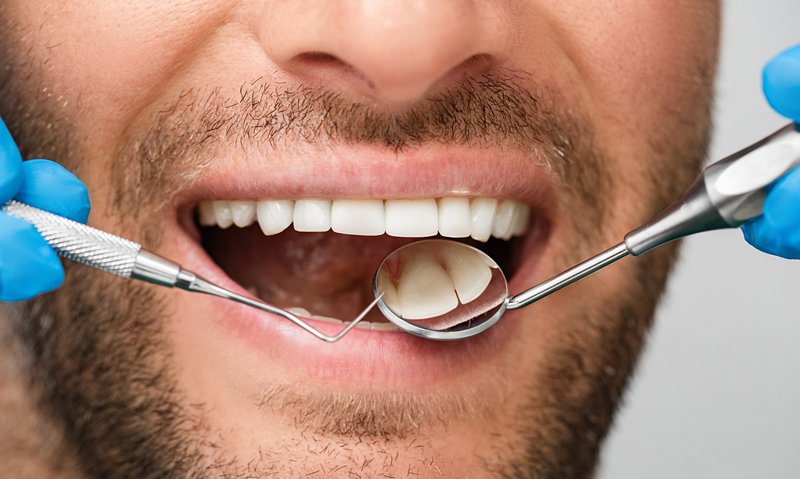Dental implants have revolutionized modern dentistry, offering a permanent solution for missing teeth that looks, feels, and functions like natural teeth. But what exactly happens when a titanium post is placed in your jaw? The science behind dental implants is fascinating, combining principles of biology, materials science, and bioengineering to create one of the most successful medical procedures available today.
Understanding how dental implants work can help you make informed decisions about your oral health and appreciate the remarkable technology that makes tooth replacement possible. From the initial placement to the final restoration, every step involves carefully orchestrated biological and mechanical processes that ensure long-term success.
What Are Dental Implants?
A dental implant consists of three main components: the implant post (typically made of titanium), an abutment, and a crown or prosthetic tooth. The implant post serves as an artificial tooth root, surgically placed into the jawbone where it integrates with the surrounding bone tissue through a process called osseointegration.
The abutment connects the implant to the visible crown, acting as a connector piece that extends above the gum line. Finally, the crown is the visible part of the tooth replacement, custom-made to match your natural teeth in color, shape, and size.
This three-part system mimics the natural structure of teeth, where the root anchors the tooth in the jawbone and the crown provides the chewing surface and aesthetic appearance.
The Biological Foundation: Osseointegration
The success of dental implants relies on a remarkable biological process called osseointegration. This term, coined by Swedish orthopedic surgeon Per-Ingvar Brånemark in the 1960s, describes the direct structural and functional connection between living bone and the surface of a load-bearing implant.
When a titanium implant is placed in the jawbone, the body’s natural healing response begins immediately. Rather than rejecting the foreign material, bone cells called osteoblasts begin to grow around and onto the implant surface. Over time, these cells deposit new bone tissue that bonds directly to the titanium surface, creating a stable foundation.
This process typically takes three to six months, during which the implant becomes increasingly stable. The bone literally grows into the microscopic irregularities on the implant surface, creating a mechanical lock that can withstand the forces of chewing and biting.
Why Titanium Makes the Perfect Implant Material
Titanium’s unique properties make it the gold standard for dental implants. This biocompatible metal doesn’t trigger an immune response or cause allergic reactions in the vast majority of patients. Its strength-to-weight ratio exceeds that of steel, yet it’s lightweight enough to be comfortable in the jaw.
The surface of titanium naturally forms a thin oxide layer when exposed to oxygen, which is what allows bone to bond directly to it. This oxide layer is stable and doesn’t break down over time, ensuring the long-term success of the implant.
Modern implant manufacturers often treat titanium surfaces to enhance osseointegration. These treatments can include sandblasting, acid etching, or coating with calcium phosphate compounds that further encourage bone growth and integration.
The Surgical Process: Precision Placement
Implant placement requires careful planning and precise execution. Before surgery, dentists use advanced imaging techniques like cone beam computed tomography (CBCT) to create detailed 3D maps of the jawbone. This allows them to determine the optimal position, angle, and depth for implant placement.
During the procedure, the dentist creates a small hole in the jawbone using specialized drills that operate at low speeds to prevent overheating the bone tissue. The implant is then carefully inserted into this prepared site, where it sits flush with or slightly below the bone surface.
The precision required for successful implant placement cannot be overstated. The implant must be positioned to provide adequate support while avoiding vital structures like nerves, blood vessels, and adjacent tooth roots.
Bone Biology and Healing Response
The success of dental implants depends on the body’s ability to heal and adapt to the presence of the implant. When bone tissue is prepared for implant placement, it triggers a complex cascade of cellular events.
Initially, a blood clot forms around the implant, providing a scaffold for new tissue growth. Within days, specialized cells called osteoblasts begin migrating to the implant site. These bone-forming cells start depositing new bone matrix, while osteoclasts remove damaged or unnecessary bone tissue.
This remodeling process continues for months, with the bone gradually becoming denser and stronger around the implant. The end result is a stable, integrated implant that can withstand the forces of normal chewing and biting.
Factors Affecting Implant Success
Several factors influence the success rate of dental implants, which currently stands at over 95% for most patients. Bone density plays a crucial role—denser bone provides better initial stability and faster osseointegration. Patients with conditions like osteoporosis may require additional treatment to ensure successful implant integration.
Overall health status significantly impacts healing. Conditions like uncontrolled diabetes can impair the body’s ability to heal and integrate the implant. Smoking is particularly detrimental, as it reduces blood flow to the healing tissues and can prevent proper osseointegration.
Oral hygiene also plays a vital role in long-term implant success. While implants can’t develop cavities, the surrounding tissues can become infected if proper care isn’t maintained, leading to a condition called peri-implantitis.
The Biomechanics of Implant Function
Once integrated, dental implants function remarkably similarly to natural teeth. They can withstand bite forces of several hundred pounds per square inch, allowing patients to eat virtually any food. The direct connection between the implant and jawbone transfers chewing forces directly to the bone, which helps maintain bone density and prevent the bone loss that typically occurs after tooth loss.
This force transfer also provides the tactile feedback that helps with chewing efficiency. While implants don’t have the same nerve supply as natural teeth, patients can still sense pressure and adjust their bite accordingly.
Modern Advances in Implant Technology
Implant technology continues to evolve, with new surface treatments and designs improving success rates and reducing healing times. Computer-guided implant surgery allows for even greater precision, while immediate loading protocols enable some patients to receive temporary crowns on the same day as implant placement.
Surface modifications like plasma coating and hydrophilic treatments enhance the speed and quality of osseointegration. Some manufacturers are also exploring new materials like zirconia for patients with metal sensitivities or aesthetic concerns.
Your Path to Understanding Implant Success
The science behind dental implants represents decades of research and refinement in materials science, biology, and surgical technique. This remarkable fusion of technology and natural healing processes has created a tooth replacement option that can last a lifetime with proper care.
Understanding how implants work can help you appreciate the complexity of the procedure and the importance of choosing an experienced practitioner. If you’re considering dental implants, discuss your specific situation with a qualified dental professional who can evaluate your candidacy and explain how the process applies to your unique needs.









